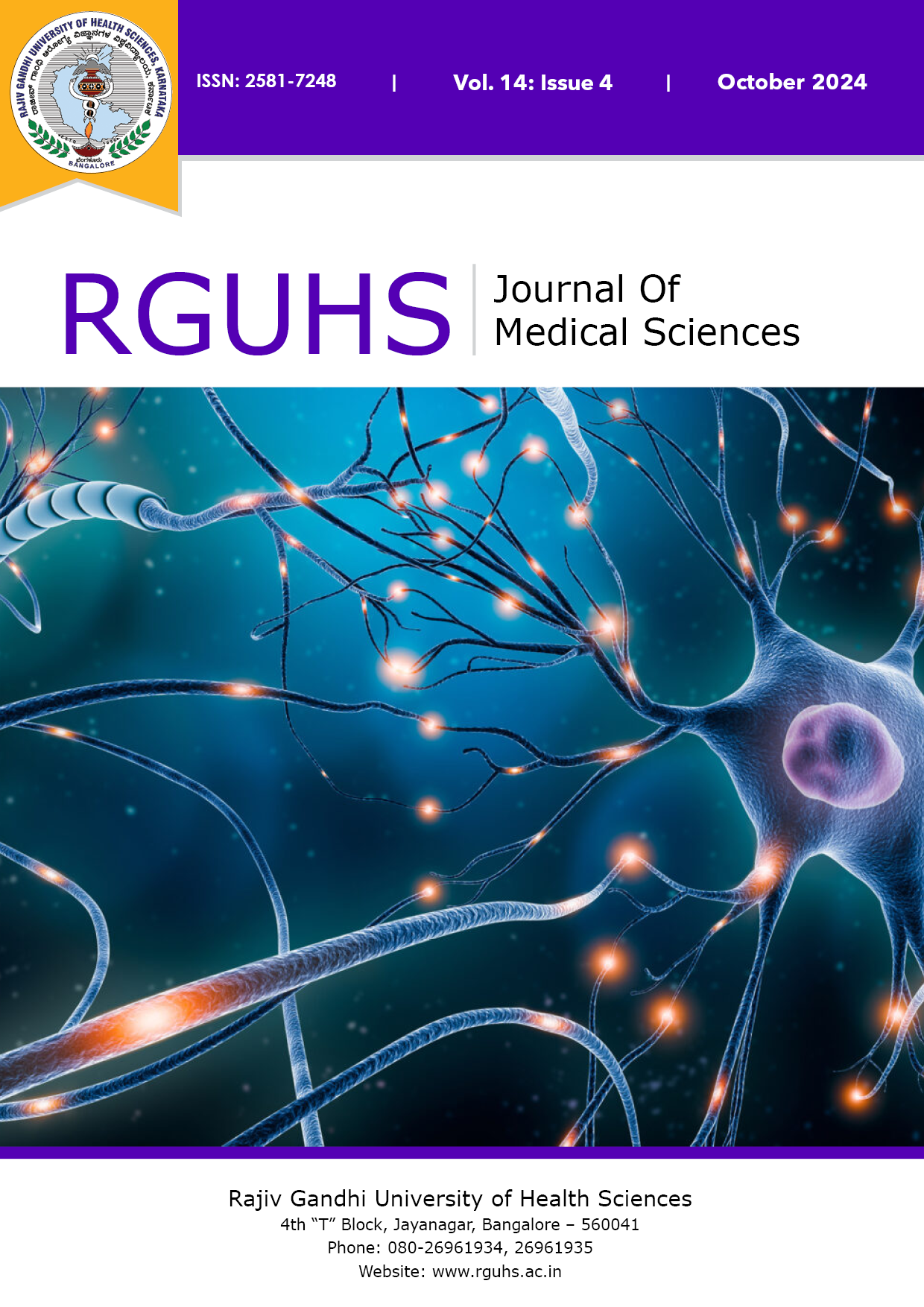
Abbreviation: RJMS Vol: 15 Issue: 1 eISSN: 2581-7248 pISSN 2231-1947
Dear Authors,
We invite you to watch this comprehensive video guide on the process of submitting your article online. This video will provide you with step-by-step instructions to ensure a smooth and successful submission.
Thank you for your attention and cooperation.
Syed Sadat1* , Balaji PA1 ,Dhaded SM2 , Goudar SS 3
1Assistant Professor, Department of Physiology, Dr B R Ambedkar Medical College, Bangalore.
2 Professor and Head, Department of Pediatrics
3 Professor and Head, Department of Physiology, KLE University's Jawaharlal Nehru Medical College, Belgaum

Abstract
Background and objectives: There is a rise in growth and global developmental delay in children and early intervention will bring down the burden on the society. The present study is to estimate the prevalence of growth and developmental delay and assess the predisposing factors among children aged three years residing in rural communities of Karnataka.
Methods: About 530 children at three years were assessed for growth and developmental delay. The Ages and Stages Questionnaire (ASQ) was administered to mothers by a trained interviewer. Growth measurements and hemoglobin estimation were done at the time of developmental evaluation. Socio-demographic characteristics of the families of children were ascertained. Prevalence of global developmental delay was estimated and association between development and maternal, child and household characteristics were explored. Physical growth was assessed by using WHO growth charts for weight for age, height for age and weight for height. Chi-square test was used to compare categorical variables. Differences were considered significant at P<0.05 level.
Results: The results showed that the prevalence of global developmental delay assessed by ASQ was 19.8%. Children displayed delay in personal-social (42.5%), gross motor (38.1.1%) and problem-solving skills (34.9%). Maternal educational level was positively associated with communication and problem-solving skills (P=0.000) while monthly household income was positively associated with communication, gross motor and problem-solving skills (p=0.000).
Conclusion: The results suggest a high prevalence of developmental delay and poor child health in this rural population. Implementing early intervention programs may ameliorate the long term consequences of these developmental disorders.
Keywords
Downloads
-
1FullTextPDF
Article
none
Supporting File
References
none